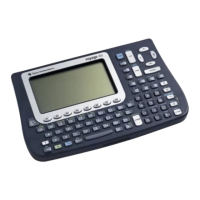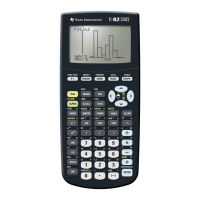Section 3: Assembler
151
TI
-
89 / TI
-
92 Plus Sierra C Assembler Reference Manual
Not for Distribution
Beta Version February 2, 2001
If the expression is relocatable, a relocation entry is generated and placed in the
object file so that the evaluation can be performed during linkage. All relocatable
expressions are resolved to absolute values after section allocation has been
performed (i.e., each relocatable section has been bound to an absolute
address). See section
1.4.5.2 Complex Relocation
, for a complete description
of how complex relocation is performed.
Note:
Complex relocation is not supported when either the
-6
option or
-c
option has been
selected. An error is generated when a complex relocatable expression is used with
either of these flags.
Note:
For users of the Motorola M68000 Resident Structured assembler (
asm68k
): The class
of expressions that are classified as complex relocatable has been extended to include
any expression that is neither absolute nor simple relocatable. Furthermore, the
limitations imposed on their usage in effective addresses have been lifted; they can be
used anywhere a simple relocatable expression can be used.
If an expression affects the size of the object code, its value must resolve to an
absolute value when it is encountered. Also, expressions used in assignments
must resolve to an absolute or simple relocatable expression when encountered.
Expressions used elsewhere will typically carry no restrictions. Any restrictions
that are applicable to a particular expression are noted with the description of its
usage.
If an expression is used as immediate data or an argument to a data directive,
and the size of the data is byte (8) or word (16), a “hole too small” warning will be
generated by the linker if the expression evaluates to a value outside the range
of a signed byte or word, respectively. An unsigned byte or word with the high
order bit set is rejected because it would be interpreted as a negative value when
used in an effective address as an absolute address or displacement. The
warning is sometimes incorrectly generated because the linker has no
information as to whether the expression it is evaluating is used as immediate
data (warning potentially incorrect) or in an effective address (warning correct).
To get around the warning problem, the linker can be forced to accept
expressions that resolve to unsigned values in the range 0 to 0xffff (0xff in the
case of a byte) by explicitly masking the entire expression with 0xffff (0xff). For
example, where the expression A + B resolves to the value 0x9040, the first
statement will generate a linker warning and the second will be accepted:
.word A+B ; linker warning generated
.word (A+B)&0xffff ; ok

